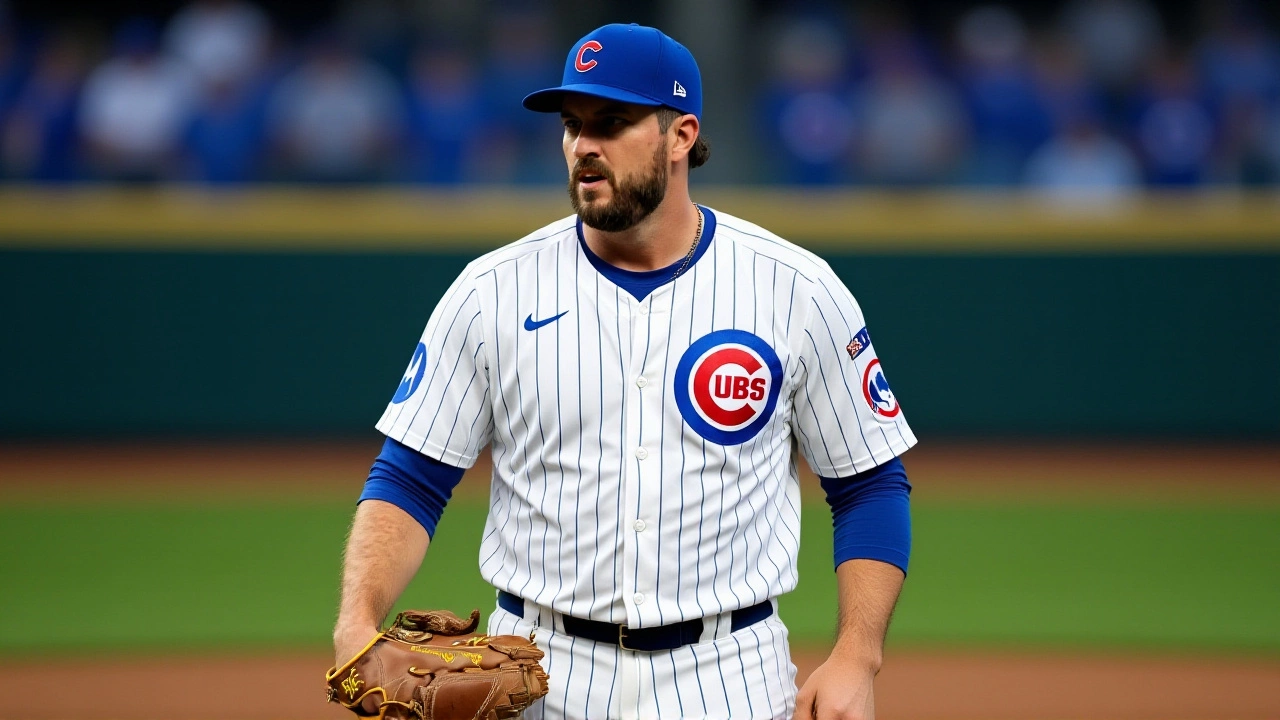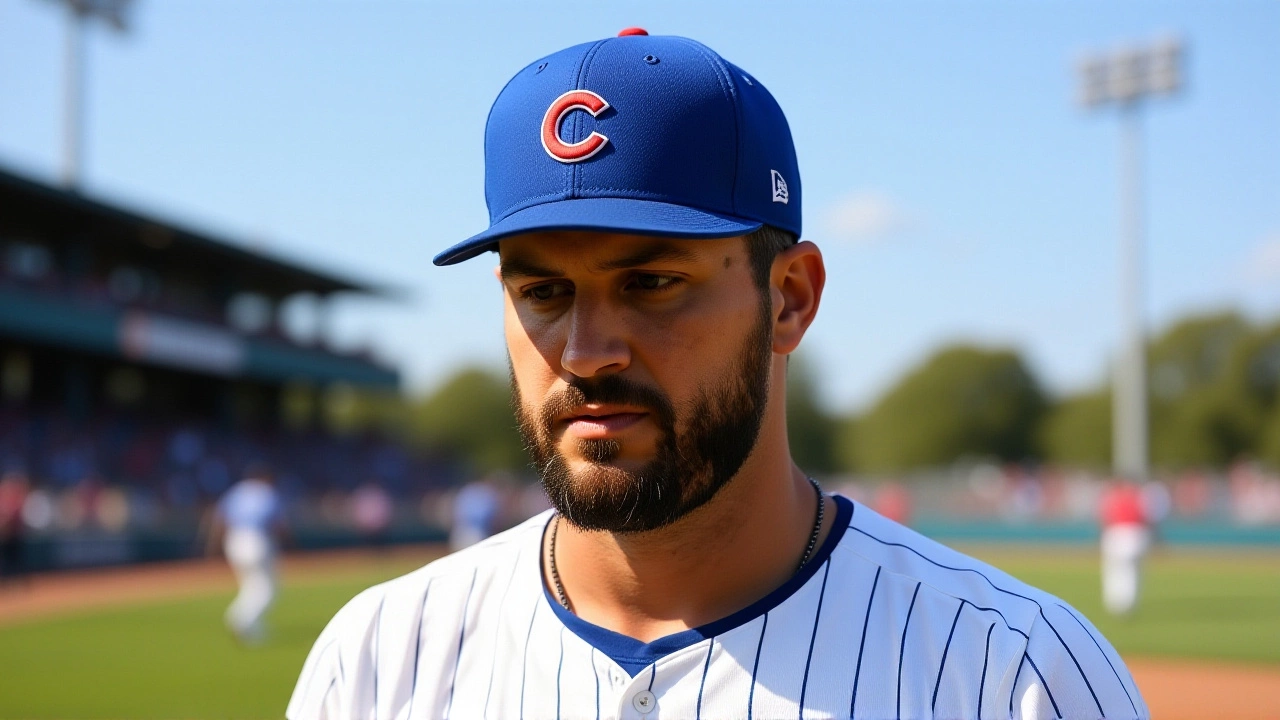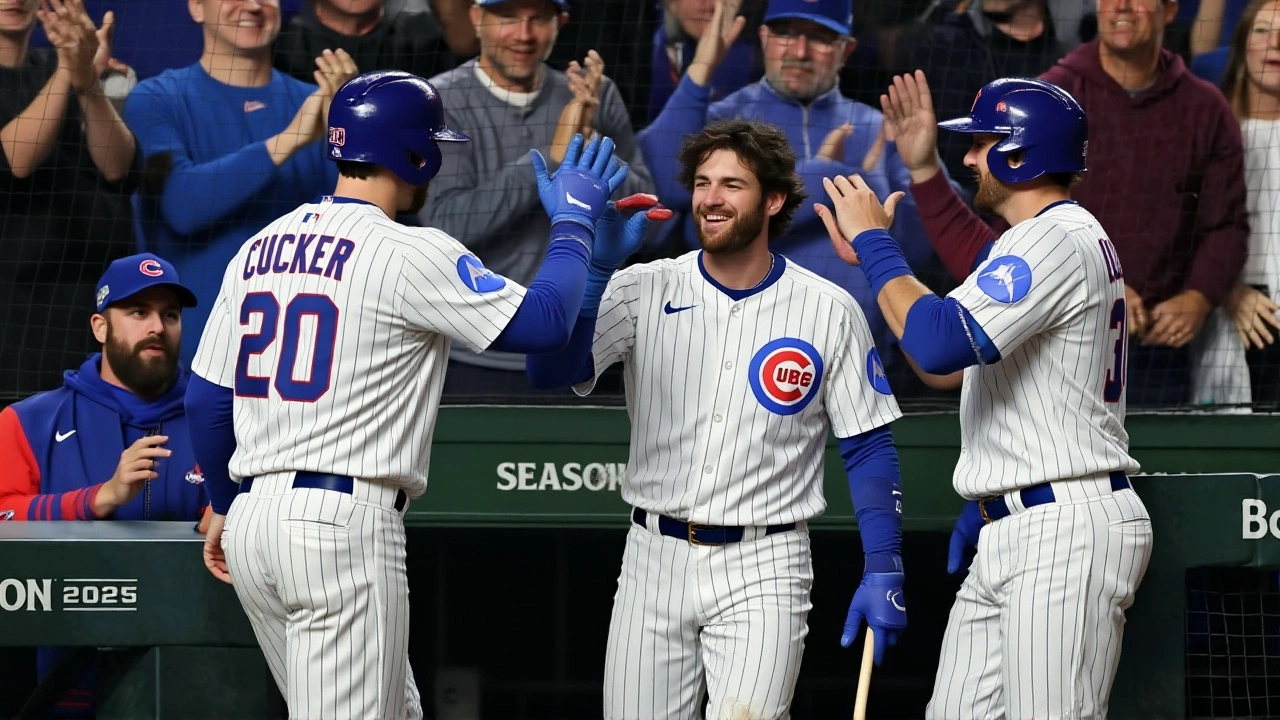When Chicago Cubs turned on the fireworks at Wrigley Field on Thursday, October 9, 2025, the roar wasn’t just for a win – it was for survival. The Cubs blanked the Milwaukee Brewers, 6‑0, in Game 4 of the National League Division SeriesChicago, Illinois, forcing a winner‑take‑all showdown on Saturday.
How the Cubs Dominated from Pitcher to Plate
The secret sauce was a blend of stingy pitching and timely hitting. Starter Freddy Peralta was the only Brewer who ever faced a Chicago batter, and he lasted just three innings, surrendering three runs on four hits before the bullpen took over. Meanwhile, the Cubs’ rotation, anchored by a sharp‑throwing left‑hander who struck out five in the first two frames, kept the Brewers off balance all night. By the third inning, the scoreboard read 3‑0, and the momentum was unmistakable.
Key Performances That Shifted the Series
Outfielder Ian Happ was the headline act. The Pittsburgh‑born star snapped a triple‑check swing into a two‑run double to left‑center in the fifth, extending the lead to 5‑0. "I just saw the ball in the gap and knew I had to drive it home," Happ told reporters moments after the game. On the other side, Brewers’ manager Pat Murphy lamented, "We just couldn’t find a rhythm. The wind at Wrigley played into their hands today."
Defensive highlights were equally vivid. A sensational diving stop by first‑base rookie "B" (identified in the broadcast as Brooks Kelley) prevented a sure run, while a third‑base wizardry by shortstop Ian Rash saved another ball that seemed destined for the foul line. The Marquee Sports Network’s highlight reel replayed those moments 5 minutes 50 seconds long, underlining how fielding can be as decisive as hitting.
Managerial Moves and the Pitching Duel
Cubs manager David Ross stuck with an aggressive bullpen strategy, pulling Peralta after his third inning and unleashing reliever Javier Bañuelos for two perfect innings. “We trusted our guys to execute the pitch‑by‑pitch plan,” Ross said in the post‑game press conference. Brewers’ skipper Pat Murphy, meanwhile, tried to spark his offense with a pinch‑hit in the seventh, but the Cubs’ defense was already set like a wall.
The contrast in regular‑season records – the Brewers’s 97‑65 finish versus the Cubs’s 92‑70 – felt irrelevant after the first three innings. In a postseason where every at‑bat can flip the narrative, Chicago simply out‑performed Milwaukee when it mattered most.

Fan Atmosphere at the Historic Wrigley
Wrigley Field, a baseball cathedral that opened in 1914 and seats 41,649 fans, was buzzing with electric anticipation. The crowd’s wave of “Let’s go Cubs!” surged with every run, and the iconic ivy‑covered outfield walls seemed to echo each applause. Social‑media snippets from the House of Highlights YouTube channel captured the fan chants, the smell of hot dogs, and the occasional “Whoa!” when a ball sailed over the left‑field wall.
Even the night sky played a part. A cool October breeze kept the temperature around 54 °F, perfect for baseball, and the stadium’s historic scoreboard lit up each time the Cubs added an “insurance” run – a phrase Ross used to describe the two runs scored after the fifth inning that gave Milwaukee little chance to mount a comeback.
What’s Next: Game 5 Preview
Saturday’s Game 5, set for October 11 at 7:05 PM Central, will decide who moves on to the National League Championship Series. Because the Cubs hold the higher seed, they will host the decisive game under the same 2‑3‑2 format the league uses for division series. If the Brewers rebound, they will need to steal a win on the road – a scenario last seen in 2015 when the New York Mets did it.
Analysts expect a restart for the Brewers with ace starter Corbin Carroll, who posted a 2.31 ERA during the regular season. For Chicago, the odds lean toward a bullpen‑heavy approach, with Ross likely to lean on his left‑handed reliever Miguel Sanchez in the fifth inning – a proven “closer‑in‑waiting.”
The winner will face the victor of the Dodgers–Padres series, setting up a National League Championship that could pit a Midwestern classic against a West‑Coast powerhouse. For now, Chicago fans can savor the moment, knowing they forced a do‑or‑die finale.

Historical Context: Two Central Rivals Collide
The Cubs‑Brewers rivalry dates back to the early 1900s, but the 2025 postseason marks the first time the two met in a best‑of‑five series since 2005, when the Cubs knocked out Milwaukee in the NLCS. Back then, the series swung on a 13‑run 10th inning – a stark contrast to this shutdown performance.
Chicago’s last playoff appearance before 2025 was in 2022, when they fell in the NLCS. Milwaukee, meanwhile, enjoyed a deep run in 2023, reaching the NLCS before bowing out to the Phillies. Both clubs have overhauled their farm systems in the last three seasons, making this 2025 encounter a showcase of home‑grown talent.
Frequently Asked Questions
How does this win affect the Cubs’ chances in the NLCS?
By evening the series at 2‑2, the Cubs now control the venue for Game 5. Winning on home turf gives them a statistical edge – historically, home teams win about 55% of decisive Game 5s in the NLDS. A victory would also preserve momentum heading into a potential NLCS matchup against either the Dodgers or Padres.
Who are the key players to watch in Game 5?
For Chicago, outfielder Ian Happ and left‑handed reliever Miguel Sanchez are pivotal. Milwaukee will likely rely on ace Corbin Carroll and power hitter Brandon Woodruff to break the shutout.
What does the series outcome mean for the Brewers’ season?
If Milwaukee falls short in Game 5, it ends a season that began with a franchise‑record 97 wins. A loss would spark questions about their postseason preparation despite a dominant regular‑season record, and likely prompt off‑season roster changes.
How does the 2‑3‑2 format impact the series strategy?
The format rewards the higher seed with three potential home games, making early road victories crucial for the lower seed. Milwaukee’s win in Game 1 gave them a chance, but losing Game 4 at home put the pressure squarely on them to steal Game 5 on the road.
When does the NLCS begin after this series?
The NLCS is slated to start on October 14, 2025, giving the winning team a two‑day rest before another grueling best‑of‑seven showdown for the National League crown.
